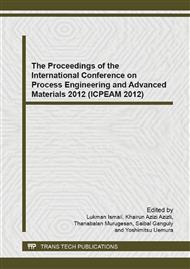p.168
p.181
p.189
p.199
p.209
p.220
p.232
p.244
p.257
Detection and Correction of Gain Mismatches of Wood-Berry Column Using Linear Residual-Input Ratio
Abstract:
Mismatches between model and plant can degrade the controller performance. Detection and correction of model parameters are required to prevent re-identification process of the whole plant. This paper proposes a method to automatically detect and correct model gain mismatch in the case of Wood-Berry column. Taguchi experiments are initially carried out to identify the most significant model gains. A set of variables called the linear residual-input ratio (LRIR) are developed to detect changes in the plant gains thus correcting the gains to bring the process to the desired setpoint. The proposed method is able to correct the mismatches in magnitude for individual and multiple gains within the range of the linear equations.
Info:
Periodical:
Pages:
209-219
Citation:
Online since:
June 2014
Price:
Сopyright:
© 2014 Trans Tech Publications Ltd. All Rights Reserved
Share:
Citation:


